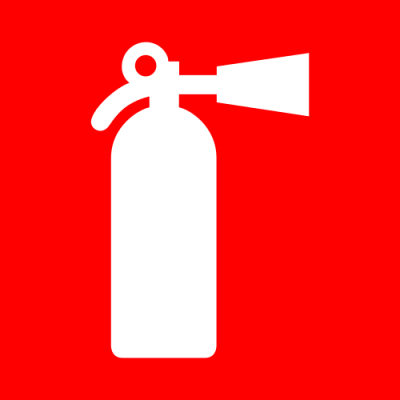Stigma, More Than A Label
Phil Murphy is a former firefighter, a former GMFRS Fire Prevention Officer responsible for enforcement, an experienced Complex Building Compliance Manager, and was a National Health and Safety Manager for a large PLC with responsibility for the safety of tens of thousands of people in their workplaces. He is also a Housing Association tenant in a 50-year-old, 24-storey block of flats with a single escape staircase. In this guest piece, he examines how social housing tenants of high-rise buildings are stigmatised and disempowered by official bodies. The post can also be found on Phil's blog here.
Posted:
Time to read:
In September 2018, Theresa May told a meeting of housing association bosses at a National Housing Federation conference that there is a stigma associated with social housing. When we concern ourselves with fire safety in high-rise buildings, we will see this stigma is also – shockingly – reflected in formal written guidance. Further, as will become clear, even though there is widespread non-compliance with safety standards, high-rise tenants are not always given this information, and therefore are hugely disempowered.
The first notable aspect of the LACORS Housing – Fire Safety 2008 guide (Local Authorities Coordinators of Regulatory Services, published by the Local Government Association) is the list of contributors: landlord organisations, Fire & Rescue Services, Chief Fire Officers, Fire & Rescue Authorities and local authorities. In fact, it seems just about everybody had an opportunity to contribute except those people to whom it is most relevant and herein lies a problem – social housing residents had no say this, or in many other documents that affect their homes and living conditions.

I have expert knowledge of fire safety issues: I am a former firefighter, a former Fire Prevention Officer responsible for enforcement, an experienced Building Compliance Manager, and a former Health and Safety Manager with responsibility for the safety of tens of thousands of people in their workplace. But I’m writing also as a resident of a 50-year-old, 24-storey housing association block of flats with a single escape staircase. For the record, the block I live in does not have cladding; it was extensively refurbished about eight years ago and that included replacing kitchens and bathrooms and the installation of a communal heating system. Since June 2017, putting right the fire safety issues inside the block that were caused largely by that refurbishment has so far cost my landlord around £1 million, none of which has been paid for by the large construction company responsible for the non-compliant works. The corrective works are still ongoing at the time of writing in January 2019.
Housing-related guidance (Local Government Association – Fire Safety in Purpose-Built Blocks of Flats), read alongside the Regulatory Reform (Fire Safety) Order 2005, creates a false division in responsibilities between shared common areas outside individual flat entrances and the dwellings just two inches away on the opposing sides of those front doors. This artificial division has contributed toward the failure to adequately assure fire protection systems are correctly and continuously maintained throughout the building.

Adding to the confusion, the government’s own Chief Fire and Rescue Adviser sat with the Department for Communities and Local Government in 2012 to write another document – Fire and Rescue Service Operational Guidance, Operational Risk Information – and, after considering Provision of Operational Risk Information System (PORIS) and Fire Service Emergency Cover (FSEC) risk-assessment scores, it concluded (page 94) that purpose built blocks of flats over four storeys were in the same risk category as care homes and hospitals. Why then did the same Chief Fire and Rescue Adviser agree as a contributor to the Local Government Association – Fire Safety in Purpose-Built Blocks of Flats document that it was a “misconception” that high-rise flats are high-risk, stating (page 18): “High-rise does not mean high-risk!”.
I was taught that a premises with a large number of people sleeping in it presents a life risk and that a “large or complex” building is high-risk, hence the phrase “high life-risk”. Thankfully Dame Hackitt has removed doubt by clearly stating that high-rise flats are high-risk buildings. Senior fire professionals and organisations need to bring to an end any duplicitous behaviour and be clear for the sake of people living in high-rise buildings, and for the firefighters that are sent to work in them, that facts remain the same whether they’re contributing to fire service operational guidance or to housing fire safety guidance.
Moreover, there is plainly potential for further confusion between the statutory responsibilities of the responsible person and the duties of Dame Hackitt’s proposed “Duty Holder”, and it’s hard to see how Dame Hackitt’s proposal will bring the clarity that is needed. An example from the LACORS Housing Fire Safety Guidance: “5.3 The aims of the fire risk assessment are: . . . to decide what physical fire precautions and management arrangements are necessary to ensure the safety of people in the premises if a fire does start”. As clear as that statement appears at first glance, there are a variety of ways to redefine the aim of a fire risk assessment in a block of flats in such a way that assessors are encouraged to completely ignore the fact that people live in the building and are a considerable distance from fresh air, with sometimes only a single means of escape. The problem is that many fire risk assessments have been carried out by under-qualified fire risk assessors who aren’t equipped with the skills to competently and fully assess high-rise high-risk buildings.

Post-Grenfell, roughly half of high-rise residential blocks in England and Wales have been found to be non-compliant, having previously been assessed by people with insufficient skills, qualifications and experience. When looking for the root cause of such catastrophic levels of compliance it’s clear there’s a direct pathway to the fire risk assessors that have been charged with periodically assessing fire safety compliance.
The extent of poor fire safety management and the irresponsibility of high-rise landlords is well guarded information. I attended a meeting hosted by Greater Manchester Fire and Rescue Service (GMFRS) for high-rise tenants, which was intended to make tenants feel safe. Fire Officers proudly announced that they’d inspected all blocks in Greater Manchester but bluntly refused to disclose what they’d found. Why would GMFRS assume it was perfectly acceptable not to tell social housing tenants about the findings at the buildings they sleep in with their families?
I subsequently submitted a freedom of information request to GMFRS for compliance information relating to the tower blocks they’d visited: it revealed 367 of the 489 blocks inspected were found to be not “broadly” fire safety compliant.
It is profoundly disempowering not to be given information about the safety of one’s home environment, where you have responsibility for yourself and your family, especially knowing that the local fire service and your landlord are sharing that information but refusing to pass it on. This gives rise to really strong feelings of alienation, disenfranchisement and insecurity. Why is that okay, especially when our screens and press broadcast a stream of assertions from everybody – yes, everybody – that they want us to feel safe at home but they steadfastly refuse to hear our voices or relate to how their actions are disempowering us?
I digress.
To fully comprehend the background to the LACORS (2008) guidance we can give it some context by contrasting another piece of directly related guidance that was also issued to fire services in 2008, the “Generic Risk Assessment (GRA) 3.2 High-Rise Firefighting". (This version remained applicable until as recently as 2014 and is therefore relevant background information in terms of “stigma”.)
One might expect to read in some detail about the importance of high standards of maintenance throughout a building with a Stay Put system; BS9990 & dry and wet risers; BS5266-1 – emergency lighting; BS5588-9 fire-safe ventilation ductwork; BS EN 81-72 covered firefighting lifts; etc. These (and other) standards are crucially important to residents’ fire safety and firefighter operational capability. They do get a mention, but they don’t jump out at you as much as the following words and phrases do, used in association with high-rise tower residents (quoted here in the order they appear in the document):
- verbal and physical attacks
- fire setting and vandalism
- anti-social behaviour
- social deprivation
- abuse
- verbal attacks
- physical assaults
- objects thrown or dropped from height
- facilities rendered unusable due to vandalism
- hypodermic needles
- razor blades
- flammable materials placed in lifts
- unlawful activities
- drug manufacture and storage
- deliberate placement of flammable materials and gas cylinders
- vandalism
- socio-economic factors
- occupant behaviour
- illegal recreational drugs
- social background
- drug use or production
- illicit drug laboratories (twice)
- assaults on firefighters
- theft of equipment
- personnel being attacked
- increased dangers through cultural pressures
- improvised barricades (twice)
- ambushes or acts of aggression/violence
- manufacture of illegal drugs
I’ve lived in three tower blocks and don’t recognise this overwhelmingly negative and highly inaccurate portrayal of high-rise residents, as though we exist in some sort of anarchistic, drug-fuelled, violent dystopia.
We need a strong residents’ voice and a presence for it at every layer of authority and at every echelon of governance that has powers to impact the home environments of social housing residents, so that we can challenge the institutional indifference, prejudice, bias and discrimination that we hear being referred to as “stigma”.
__________
How to cite this blog post (Harvard style)
Murphy, P. (2019). Stigma, More Than A Label. Available at: https://www.law.ox.ac.uk/housing-after-grenfell/blog/2019/02/stigma-more-label (Accessed [date]).
Share:
